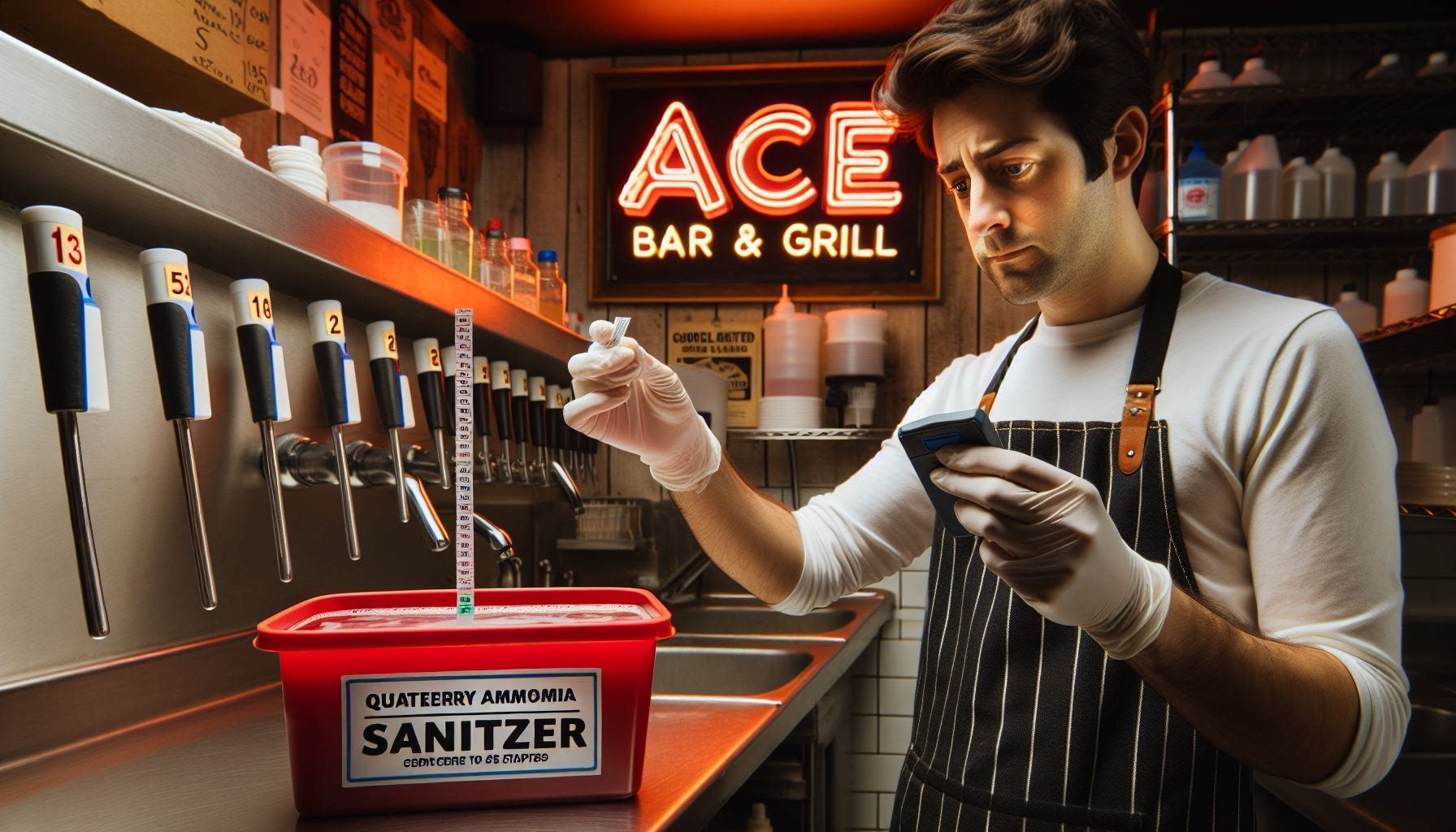In the restaurant industry, maintaining a clean and safe environment is crucial for public health. The FDA approves three primary types of chemical sanitizers for use in restaurants: chlorine, iodine, and quaternary ammonium compounds, often referred to as quats123. Here’s a brief overview of each:
- Chlorine-Based Sanitizers: Effective at low concentrations and have a fast action against bacteria and viruses. They are typically used at concentrations of 50-200 parts per million (ppm)4.
- Iodine-Based Sanitizers: Known for their effectiveness at lower temperatures and are used at concentrations of 12.5-25 ppm. They have a moderate action time and are less affected by water hardness4.
- Quaternary Ammonium Compounds (Quats): Effective at killing a wide range of microbes and are not as corrosive or irritating as chlorine-based sanitizers. They are used at concentrations of 200-400 ppm4.
California food handlers need to have a solid understanding of these sanitizers for several reasons:
- Health and Safety Compliance: Knowledge of proper sanitizer use is required to comply with health regulations and to pass health inspections.
- Effective Sanitization: Using the correct concentration of sanitizers ensures that all surfaces are properly disinfected, reducing the risk of foodborne illness outbreaks.
- Proper Usage: Different sanitizers have different applications and limitations. For example, chlorine can be more effective on certain surfaces compared to quats.
- Chemical Safety: Food handlers must understand how to handle and store chemicals safely to prevent accidents and injuries.
Using test strips is essential for ensuring that sanitizers are at the proper ppm. Test strips are dipped into the sanitizing solution, and the resulting color change indicates whether the concentration is within the safe and effective range4. This is critical because:
- Too Low Concentration: May not effectively kill harmful microorganisms, leading to potential health risks.
- Too High Concentration: Can be toxic and may leave harmful residues on surfaces that come into contact with food.
ACE Food Handler provides training that covers these aspects, ensuring that food handlers are proficient in the safe and effective use of chemical sanitizers. Their courses are designed to help food handlers understand the importance of sanitization, how to measure and achieve the correct sanitizer concentration, and how to use and interpret test strips correctly3.
For comprehensive training on these and all other food safety topics, California food handlers can rely on ACE Food Handler as a resource for staying informed and compliant with food safety standards3.





